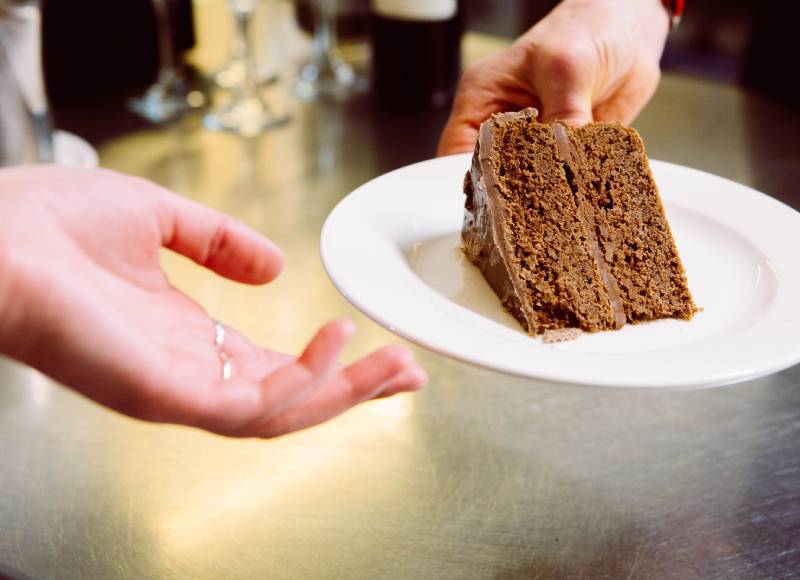The Irish Answer
The items on show in our History Room in May 2018 have been curated by intern Alex Locke. Entitled ‘The Irish Answer’, the display concentrates on William Gladstone and Irish Home Rule, and shows not only the complexity of the issue, but the many different types of printed matter the subject generated.
Take a look at this online exhibition of the items included in the display.
 |
‘Home Rulers, however, who have some special knowledge of England and of Ireland, who believe that the genius of Mr. Gladstone has discovered a specific for the cure of Irish discontent, and who entertain the finest convictions that Home Rule for Ireland involves neither dangerous nor fatal innovations for the Constitution of Great Britain…’ Justin McCarthy The Case for Home Rule, February 1887. [WEG M 46.4 GRO]
 |
‘Last year it looked as if the solution was nigh, if Mr. Gladstone’s spirited eloquence was going to carry the English nation along with it…‘ Phillippe Daryl, Ireland’s Disese, 1888.
 |
Published soon after the First Home Rule Bill, this is Gladstone’s own annotated copy. His notes were likely made in reflection after losing the General Election, and possibly used in preparation for his second attempt at Home Rule. [WEG M 46.42 Mac]
Cartoons from the satirical magazine Punch

A press clipping of a speech made by Lord Salisbury, who became Conservative Prime Minister after Gladstone resigned in 1885. When Gladstone began to support Home Rule Lord Salisbury opposed him and openly attacked him for it, as he does in this speech that Gladstone has saved, cut out and annotated. [GG/1420]
 |
 |

Satirical Conservative pamphlets including The Irish Green Book. The anti-Home Rule stance taken by Conservatives is interesting as a comparison to Brexit, as they took the Brexit remain stances of ‘things work as they are and this will make things worse’ and ‘stronger in the union’. [M 34.9G 88]

The man in front of Gladstone is Charles Stewart Parnell, leader of the Home Rule League, a powerful political force in the 1880s.
 |
Handwritten Gladstone notes on Ireland. 1. [GG/1420]
[Transcript]
A contrast Parliament of 1868-74 .5y.
1. Irish Church disestablished
2. Irish Land act 1870
3. Education act 1870
4. army purchasebolition 1871
5. Ballot-act 1871
6. University tests abolition act 1871+ 7. Irish University Education act defeated by tory votes
1886-92. by.
1. Bad.
2. “Immoral”
3. Land Purchase. Broken Pledge
4. County Councils }
5. Small Holdings } Skeletons
6. National Debt good. Supported
 |
Handwritten Gladstone notes on Ireland. 2.
[Transcript]
New responsibilities of the people
Masses v. Nation } to may not be
+Nornconf [nonconformists] v. Church } so always
it is the Govt who has wasted the Irish
and were then wasted
spent in causing mischief

Handwritten Gladstone notes on Ireland. 3.
[Transcript]
Irish questions decided on English motives.
Church from 1835 until 1867
1. food in. 1845-6 (illegible)
2. Sunday closing long delayed
In 1801 the Act of Union was passed creating the United Kingdom of Great Britain and Ireland, but just because Britain and Ireland were now officially united as one Kingdom, they were not equal. Thanks to laws and social positions heavily favouring Anglican elites, a ruling government not in their own country, and stereotypical and racist attitudes from many English people (including MPs), Ireland was poorly ruled with seemingly little care and respect. This unequal treatment was largely responsible for the devastation caused by The Great Famine of 1845 – 1849, wherein millions died and the Irish population fell about 20% - 25%.
The Irish Question was being asked a lot in Gladstone’s day, and was in essence, what should be done about Ireland? Most knew British-Irish relations could not continue the way they had but no one tried to put forward a definitive solution in Parliament, until Gladstone that is.
By 1885 Gladstone had become committed to the cause of Irish Home Rule and when he became Prime Minister for the third time in 1886 he put forward the First Irish Home Rule Bill which would allow self-governance in Ireland, and for good measure made a three hour speech imploring the House of Commons to vote in favour of it. If only he had made a four or a five hour speech, they might have listened, but the Bill was defeated and Gladstone was voted out of office after a snap General Election only five months into his term.
Gladstone was steadfastly determined to achieve Home Rule and in 1893, as Prime Minister for the fourth time, he introduced the Second Irish Home Rule Bill. This time it was actually passed in The House of Commons, despite Gladstone drafting the Bill completely in secret and making a huge error of £360,000, a lot of money now but the equivalent of millions in 1893. However despite the error being fixed and the Bill passing, it was defeated in The House of Lords 419 votes against to just 41 for. Gladstone was 83 years old by this point and would not be able to try again, retiring from politics only a year later on the grounds of failing health.
Irish Home Rule would not be achieved until two more bills and a World War later, when in 1920 the Government of Ireland Act was passed, granting Irish Home Rule at last and splitting Ireland in to Northern Ireland and Southern Ireland.
The Irish Answer, is on display in our History Room throughout May 2018. To view as a visitor, join one of our daily Glimpses at 12pm, 2pm or 4pm.


